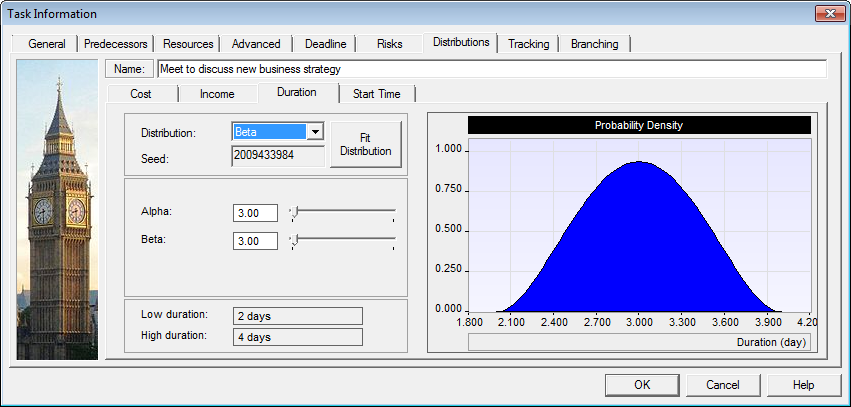Normally when we model project risks we use:
- Risk events, which affect tasks or resources. These risk events may increase or reduce task duration, cost, start and finish times, work, lags and other task parameters. Risk events are defined by probabilities and impacts.
- Uncertainties in task duration, cost, start and finish times, rates, work and other parameters; they are expressed as statistical distributions.
Modeling risk events is relatively straight forward as it is easy for people to contemplate the idea to something probably may happen that would affect the outcome of their projects. Key words here a probably, which means there is a chance that something will happen that is greater than 0 and less than 100%. Uncertainties can be much more difficult to assess as they represent inherent variances that always occur in any process. For example, task duration can be increased due to multiple events: delay due to supplier, change request, etc. However even we include most common risk events to our risk model it still will be a certain variation in task duration due to multiple small factors, which is hard to model using single events.
In theory statistical distribution for uncertainties should be calculated based on historical data for similar tasks. However in reality it is hard to do because of the following reasons:
- Sometimes relevant data for previous tasks are not available. For example if you are trying to determine duration of software development tasks, it may be hard to find similar tasks completed before: many software development projects have completely new project scope compared to previous one.
- Project schedule may have hundreds and perhaps thousands of tasks. Determining similar completed tasks for each of them would be very time consuming.
- In order to create accurate statistical distribution you would need to have many samples with historical data, which may not be practical.
So what is the solution? In many cases schedulers and risk analysts simply assigned the same uncertainties to all tasks in the project. For example, they may apply duration uncertainties -15% – +5% expressed by beta statistical distribution to all tasks in the project schedule. At the same time they also use risk register and assign risk to different tasks and resources. In such model risks will be attributed to significant events, such as change of requirements, delay due to faulty components, etc., while uncertainties in task duration will be attributed to all other events with smaller probability of occurrence.
More elaborated approach would be to assign different statistical distributions to different tasks. Usually tasks may have different levels of uncertainties. For example, office tasks such as planning and project management will have -5% – +2% uncertainties range, while field construction tasks will have -10% – + 5% uncertainty range. A separate group of tasks can be related to third-parties, such as suppliers and contractors. Uncertainty ranges in such tasks can be even greater. Organization would define set of rules how uncertainties should be defined. In this case these rules will be consistent across all projects.
RiskyProject project risk analysis and risk management software helps to define uncertainties and apply them to different tasks and resources. RiskyProject Enterprise allows comparing different projects with risk events originated from common risk register and uncertainties defined using common set of rules.

